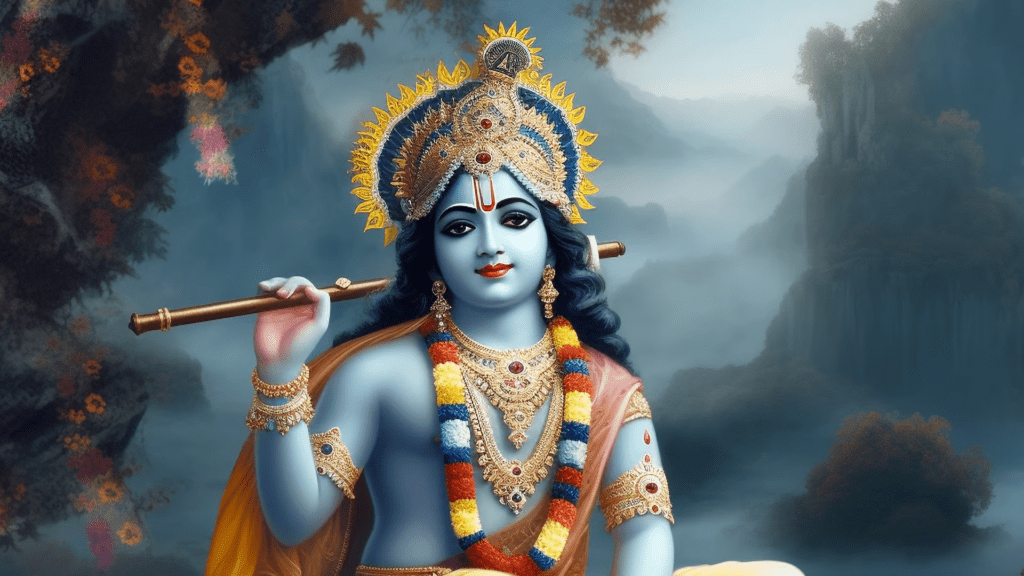Lord Krishna, the enigmatic and beloved deity of Sanatan Dharma, holds a unique position within the pantheon. Revered as an avatar of Vishnu, he descended to Earth nine times, each marked by a specific purpose and profound impact on humanity. But why nine? Why not eight, or ten? This seemingly simple question has sparked theological discussions and ignited the curiosity of devotees for centuries.
The Symbolic Significance of Nine
Delving into the world of symbolism, the number nine holds immense significance in Hindu scriptures. It represents completeness, culmination, and the divine order of the universe. In the Vedas, nine is associated with the Navagrahas, the nine celestial bodies influencing our lives. It also resonates with the nine dimensions of reality, encompassing the physical, mental, and spiritual realms.
The Nine Avatars and Their Cosmic Dance
Each of Lord Krishna’s nine avatars embodies a specific aspect of the divine, playing a crucial role in the cosmic dance of creation, preservation, and dissolution. Let’s unravel the purpose behind each descent:
- Matsya: The primordial fish, Matsya, rescued the Vedas during the great flood, symbolizing the preservation of knowledge and wisdom.
- Kurma: The cosmic tortoise, Kurma, served as a churning rod for Mount Mandara, demonstrating the power of selfless service for the greater good.
- Varaha: The boar, Varaha, lifted the Earth from the cosmic ocean, signifying the restoration of balance and order.
- Narasimha: The man-lion, Narasimha, protected Prahlad from his tyrannical father, Hiranyakashipu, embodying the triumph of good over evil.
- Vamana: The dwarf, Vamana, tricked King Bali into granting him three paces of land, ultimately restoring the stolen kingdom to the rightful heir.
- Parasurama: The Brahmin warrior, Parasurama, cleansed the Earth of Kshatriya kings who had become corrupt, upholding the principles of dharma.
- Rama: The ideal king and son, Rama, established righteousness and justice through his reign, demonstrating the path of dharma in human form.
- Balarama: Krishna’s elder brother, Balarama, represented strength, knowledge, and the power of humility, complementing Krishna’s divinity.
- Krishna: The eighth and most celebrated avatar, Krishna, embodied love, divine play, and the ultimate reality of Brahman. He played multifaceted roles, guiding humanity, teaching profound wisdom, and vanquishing demons.
Beyond the Number: The Unity within Diversity
While the number nine signifies completeness, it’s crucial to remember that each avatar is not isolated. They are interconnected, representing different facets of the same divine being. Just as the nine planets in our solar system dance in a harmonious ballet, the nine avatars weave a cosmic tapestry of divine intervention.
The Unexplained: A Space for Faith and Mystery
Why nine? Perhaps the answer lies beyond our finite comprehension. The divine chooses its path, and our limited human understanding can only grasp so much. The unexplained aspect of the nine avatars serves as a reminder of the vastness of the divine, inviting us to surrender to faith and embrace the mystery.
Conclusion: A Legacy of Inspiration
Whether seeking theological understanding or personal inspiration, the nine avatars of Lord Krishna offer invaluable lessons. They remind us of the divine’s ever-present guidance, the cyclical nature of creation and destruction, and the power within each of us to overcome adversity and fulfill our dharma. The number nine, therefore, becomes not just a numerical detail, but a symbolic doorway to understanding the divine’s grand design and finding our place within it.


